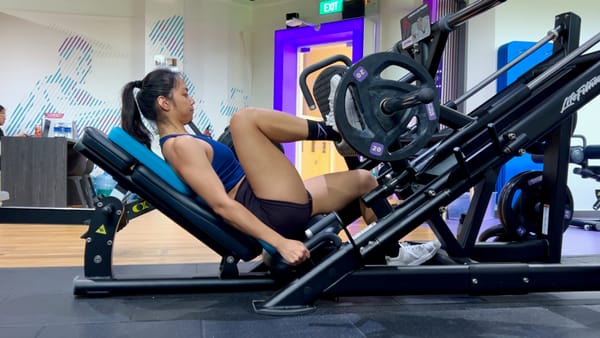8 Hack Squat Alternatives (Most to Least Support)
Explore 8 practical hack squat alternatives. Ranked by the level of support available for each exercise. Includes tips and common mistakes.
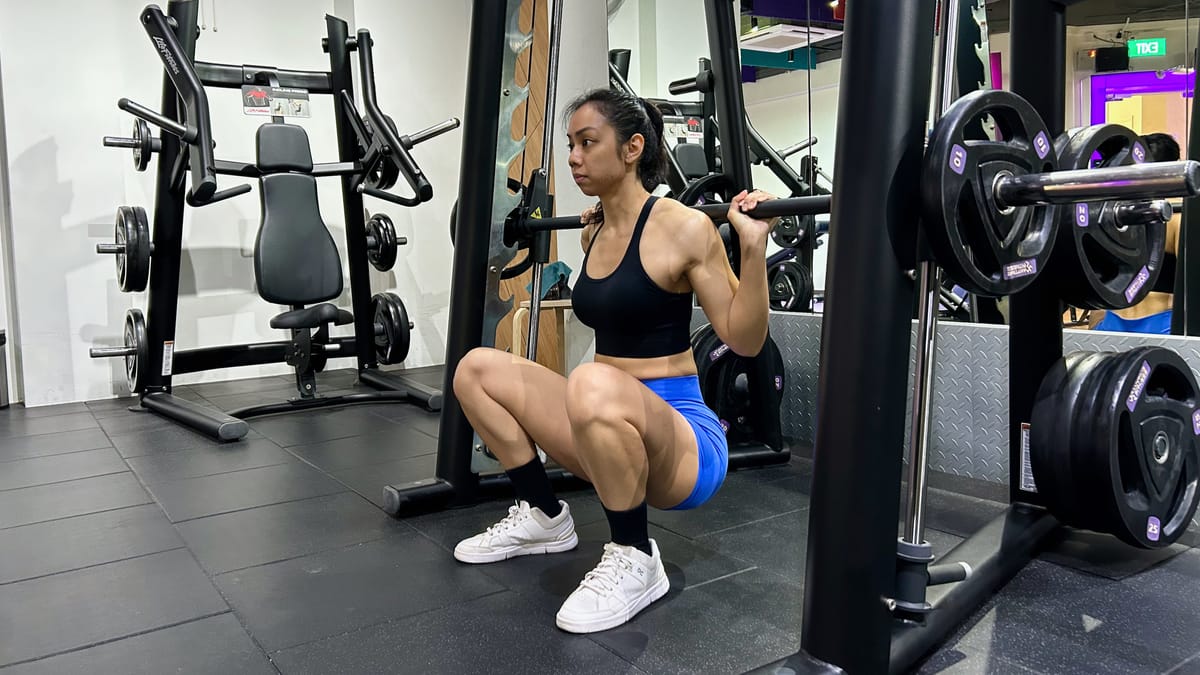
Hack squats are a lot of fun. But sadly, not every gym has a hack squat machine.
And even when there is, we know how sometimes the person before you soaked it in sweat and left you wondering, “Am I nasty enough to go for it?”
Well, that’s why we’ve come up with some practical hack squat alternatives.
Good to have some options in the gym, right?
What makes a good hack squat alternative?
Let’s look at the hack squat:
The hack squat is a wonderful leg exercise because it provides plenty of knee flexion, a stable setup, and a relatively upright torso position.
And let’s not forget that you can go heavier on the hack squat (compared to a back squat).
For good hack squat alternatives, we want exercises that share at least some of these attributes (or come close to replicating them).
Our hack squat alternatives criteria:
- A stable setup to allow for good ROM
- Plenty of knee flexion to target your quads effectively
- Relatively upright torso (or at least not leaning forward too much)
For practical reasons, we won’t just cover exercises that are machine-based and offer plenty of support. (Quite sure I’ll get fired for writing a list of just 2 exercises. 🥲)
Instead, we’ll group the exercises based on how much support they provide. You can assess your choices and decide what you like best.
Overview of hack squat alternatives
Here's how much support each of these hack squat alternatives provide and whether they're free-weight or machine-based exercises.
| Exercise | How much support? | Type of equipment |
|---|---|---|
| Leg press | Plenty | Machine |
| Pendulum squat | Plenty | Machine |
| Smith machine squat | Average | Machine |
| Belt squat | Average | Machine |
| Landmine squat | Average | Machine |
| Sissy squat | Average | Free weight |
| Goblet squat | None | Free weight |
| Front squat | None | Free weight |
#1: Leg press
How much support is available? Plenty. As much support as there can be.
The leg press is always a safe bet. There’s at least one in every gym, and you’re probably familiar with it.
Setting up the leg press is simple and straightforward.
Plus, you won’t have to worry about balance. This means you can adjust your feet position to suit your preferences and goals.
Leg press tutorial:
Common mistakes:
- Rounding your lower back
- Using a stance that limits your ROM
- Using too much weight
- Using extreme feet positions
Tips:
- Lean the seat back as far as possible to maximize ROM
- Go as deep as you can safely manage
- Place a pad on the seat if you want to increase ROM
- Adjust your feet position based on your goals and preferences
Just like the hack squat, the leg press offers the support you need for a generous ROM. That’s what you want to take advantage of.
The tips above make sure you can get as much knee flexion as reasonably possible.
#2: Pendulum squat
How much support is available? Plenty. As much support as there can be.
Just like the leg press, the pendulum squat offers the support you need for a good hack squat alternative. And it allows for a great ROM and plenty of knee flexion.
Even better, the pendulum squat has a different resistance profile from other squat exercises.
To be exact, it feels the easiest at the bottom and the hardest at the top — the opposite of a typical squat movement.
This means the pendulum squat would complement most leg workouts very well.
How to do the pendulum squat:
Common mistakes:
- Rounding your lower back
- Not squatting low enough
- Using too much weight
Tips:
- Go as deep as you can safely manage
- Pull down on the machine to create tension in your torso
- Adjust your feet position based on your goals and preferences
The pendulum squat is pretty much the perfect alternative to a hack squat if you ask us.
But just one problem: the pendulum squat is not very common. So if you’re blessed with one in your gym, go crazy!
#3: Smith machine squat
How much support is available? Average. Fixed path provided by Smith machine.
Somewhat surprisingly, the Smith machine squat could be one of the best hack squat alternatives around.
It comes close to replicating the torso angle and amount of knee flexion you get with the hack squat.
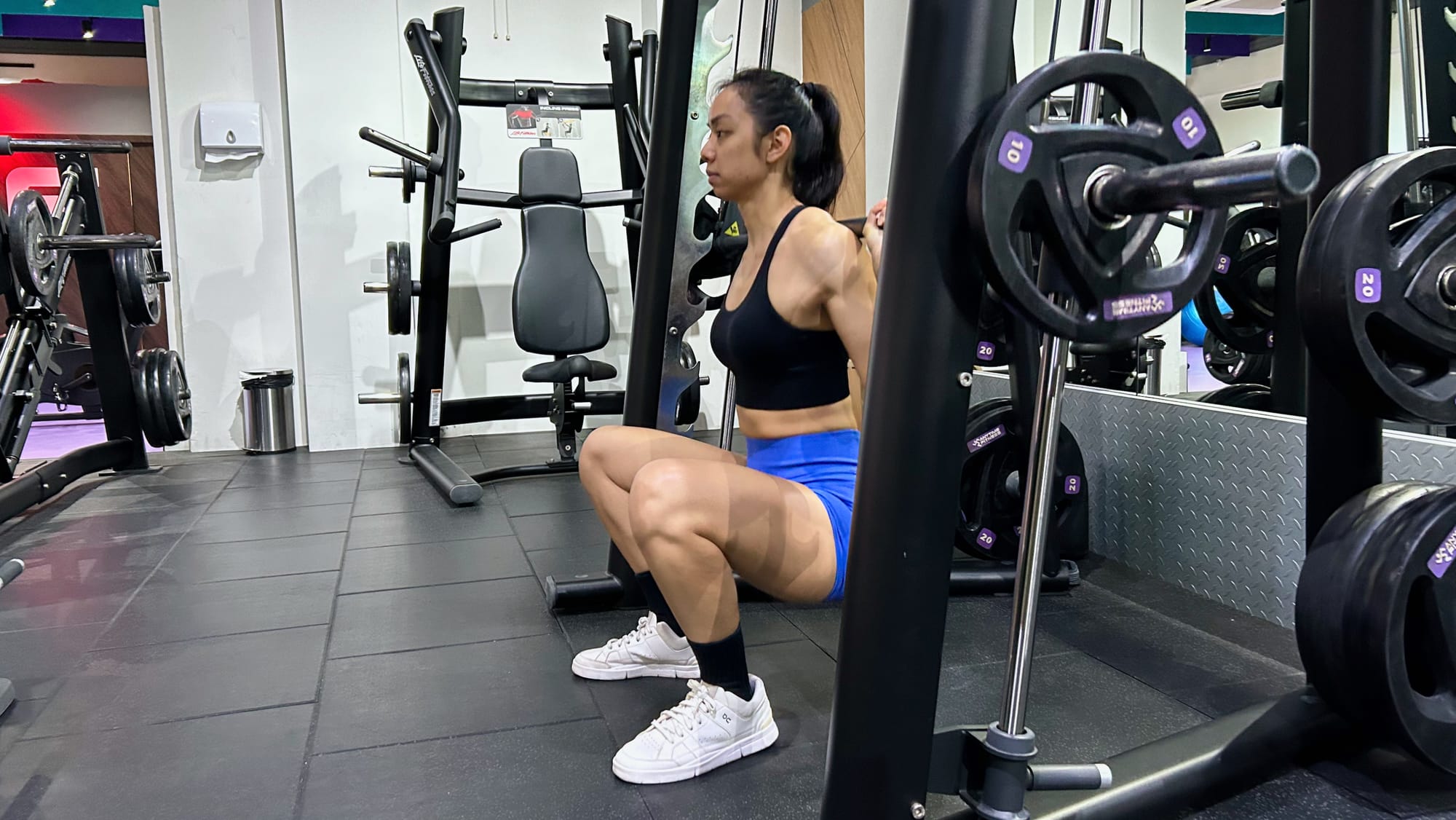
Only drawback? There’s no back support on the Smith machine squat.
But with a fixed bar path, the setup on the Smith machine is still pretty stable. Good enough in our opinion!
How to do the Smith machine squat:
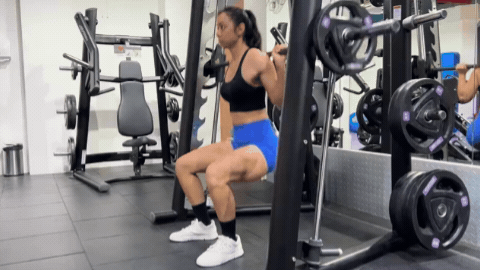
Common mistakes:
- Positioning your feet directly under the bar
- Using too much weight
- Using a stance that limits your ROM
Tips:
- Position your feet slightly in front of the bar (to lean backward slightly)
- Maintain an upright torso
- Elevate your heels for greater ROM
It’s good to note that there are 2 types of Smith machines: vertical and angled.
To get the Smith machine squat as close as possible to the hack squat, face outwards on the angled Smith machine and position your feet slightly in front of the bar.
This creates the backward lean needed for maximum ROM and knee flexion.
We have an in-depth guide on the Smith machine squat (and more):
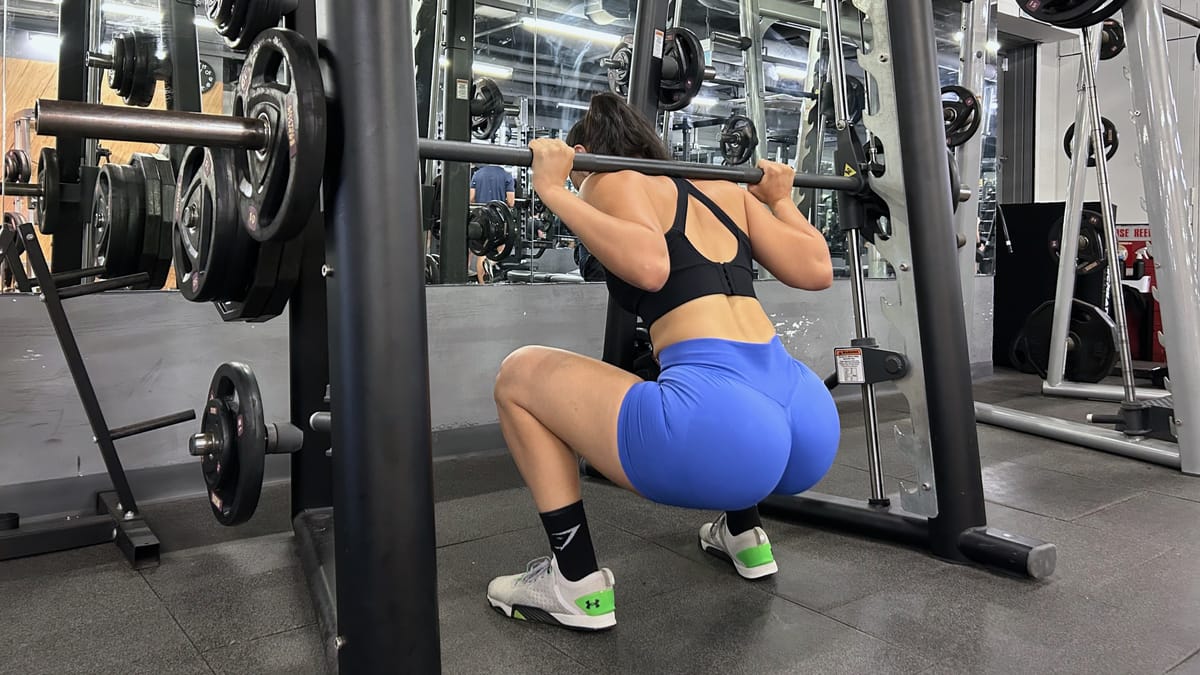
#4: Belt squat
How much support is available? Average. Hold onto the machine for support.
In the world of squat variations, the belt squat is unique: it’s the only squat where you can load the weight directly on your hips.
This means not having to load your spine and shoulders.
If you’re dealing with (or are concerned about) axial fatigue from your squats or overhead exercises, the belt squat could be a lifesaver.
It’s also a wonderful option if you’re recovering from upper-body injuries since it shifts the load directly to your legs instead.
Belt squat tutorial:
Common mistakes:
- Rounding your lower back
- Pulling too hard on the support
- Using too much weight
Tips:
- Hold onto the machine for a more stable setup
- Keep an upright torso
- Go as deep as you can safely manage
To use the belt squat as a hack squat alternative, it’s best to hold onto the machine for support. This improves your stability and keeps your torso upright.
This allows you to focus on squatting deeper and maximizing knee flexion.
#5: Landmine squat
How much support is available? Average. Some support provided by landmine attachment.
While it’s not a common sight, the landmine squat can be a pretty good hack squat alternative!
Just be ready to deal with all the curious stares because TBH, everyone wants to try it out. (You’d look too, won’t you? 😏)
How to do the landmine squat:
The landmine squat feels pretty similar to the Smith machine squat because you’re able to lean back slightly while having the weight move through a fixed path.
And just like the Smith machine variation, it replicates the hack squat movement very closely.
That said, the landmine squat is slightly less stable than the Smith machine option since the bar can still drift sideways.
Plus, placing the whole load on one shoulder can be quite uncomfortable once you go heavier.
Common mistakes:
- Standing straight up under the bar
- Not squatting low enough
- Keeping arms too far forward (on front-loaded variation)
Tips:
- Face outwards and load the bar on your shoulder
- Position your feet slightly in front of the tip of the bar
- Lean backwards slightly
- Elevate your heels for more ROM
If you’re more familiar with loading it like a goblet squat, that’s perfectly fine too!
How to do the landmine squat (front-loaded):
As you’d expect, the front-loaded landmine squat resembles a goblet squat more than a hack squat.
That said, even loading it in front does a decent job keeping your torso upright! That’s good enough for us.
#6: Sissy squat
How much support is available? Average. You can grab onto a support.
Let’s be honest, the sissy squat doesn’t look quite the same as the other options here. And it looks nothing like the hack squat.
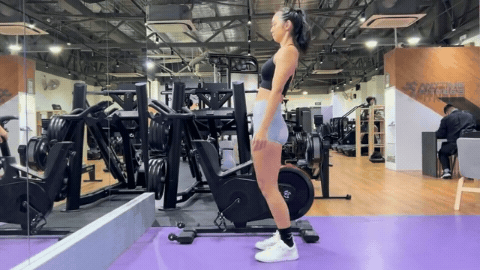
TBH, we don’t blame you for thinking it’s just another “fancy but ineffective exercise popularized by influencers”.
Yes, the sissy squat is quite different from the typical squat. But no, it’s far from being a gimmicky exercise.
In fact, the sissy squat does one thing very, very well: targeting the quads.
How to do the weighted sissy squat:

Common mistakes:
- Leaning back too much
- Rushing on the concentric and eccentric
- Initiating the movement by leaning back
Tips:
- Maintain a straight line from shoulders to knees
- Lean back just enough to stay balanced
- Start with bodyweight
- Grab onto support for more stability
The sissy squat makes for a wonderful hack squat alternative since it offers maximum knee flexion while keeping your hips at the same angle throughout.
To be clear, that’s essentially an upright torso position.
What’s more, the sissy squat is potentially even better than the hack squat at targeting your rectus femoris (2nd largest quad muscle that squats don’t train very well).
Just be sure to grab onto a support for the sissy squat.
You don’t want balance to be the limiting factor. Without a stable setup, it simply wouldn’t be a good replacement for hack squats.
Want to try the sissy squat? This guide has everything you need to know:
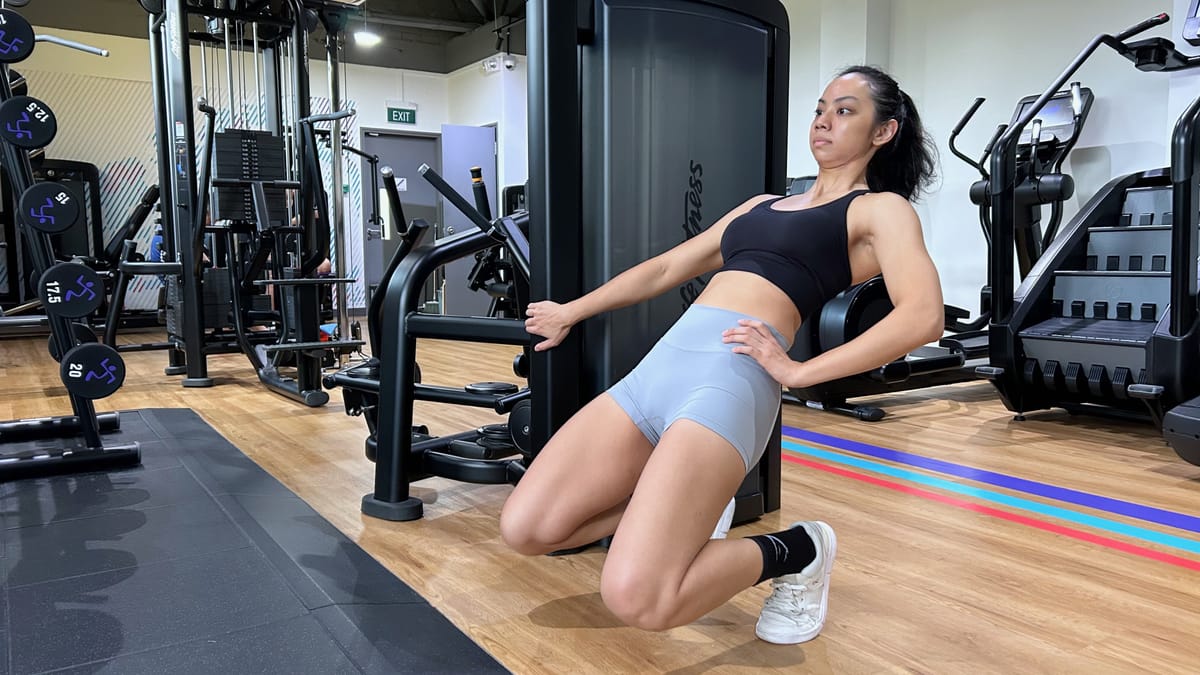
#7: Goblet squat
How much support is available? None. It’s free weight.
Surprised the goblet squat made it as a hack squat alternative?
Yes, we know it’s a free-weight exercise, and in terms of stability and support, it’s pretty far from the hack squat.
But the goblet squat makes up for its lack of support with its upright torso position and a generous amount of knee flexion.
Let’s not forget how accessible this exercise is. All you need is a dumbbell (or really anything you can hold up).
Goblet squat tutorial:
Common mistakes:
- Holding weight too far away from the body
- Leaning forward too much
- Letting knees cave inwards
Tips:
- Elevate heels to increase ROM
- Maintain an upright torso
Trying to get the most out of your goblet squats? Try elevating your heels with weight plates or a squat wedge.
This allows you to stay even more upright and lets your knees travel forward even more.
#8: Front squat
How much support is available? None. It’s free weight.
We saved the hardest exercise (in our opinion) for the last.
Similar to the goblet squat, the front squat can be one of the many hack squat alternatives to try.
It also has a clear advantage over the goblet squat in the amount of weight you can use. (There’s really only so much you can hold with the goblet squat 🥴).
But, here’s the thing: the front squat is pretty demanding on technique and mobility. The goblet squat has much lower requirements in comparison.
TBH, it’s only a practical option if you’re already familiar with it or are willing to learn it.
How to do the front squat:
Common mistakes:
- Letting your elbows drop
- Leaning forward too much
- Letting knees cave inwards
Tips:
- Stay as upright as you can
- Look forward and keep your elbows up
- Elevate your heels for more ROM
Just like the goblet squat, elevate your heels on the front squat for more ROM.
This lets maintain a more upright torso throughout so you can squat deeper.
Which hack squat alternative should you choose?
Let’s quickly explore how you can choose from all the hack squat alternatives we just talked about.
Here are the 3 main things you’re looking for in your choice of exercise.
Able to do with good technique and form
To train safely and effectively with an exercise, you should be proficient enough to perform it with good technique and form.
It’s perfectly fine if you’re new to a particular exercise.
Just make sure to take the time to master the movement and be prudent with how fast you progress in weight. You don’t want to rush the process.
Able to progressive overload consistently
You should be able to increase the weight, number of reps, or frequency you use for an exercise over time.
Only then can you create the stimulus needed to build muscle.
If you can’t be consistent with progressive overload for a particular exercise (e.g., equipment shortage), it’s best to check out other options.
Aligned with your preferences and goals
This point is often overlooked: pick an exercise that’s aligned with your goals and that you truly enjoy.
Sounds logical enough, but you’d be surprised how often people pick exercises based on what’s trending on social media.
Don’t fall into that trap. What’s most important is picking an exercise you look forward to and trusting that the exercise gives you results.





